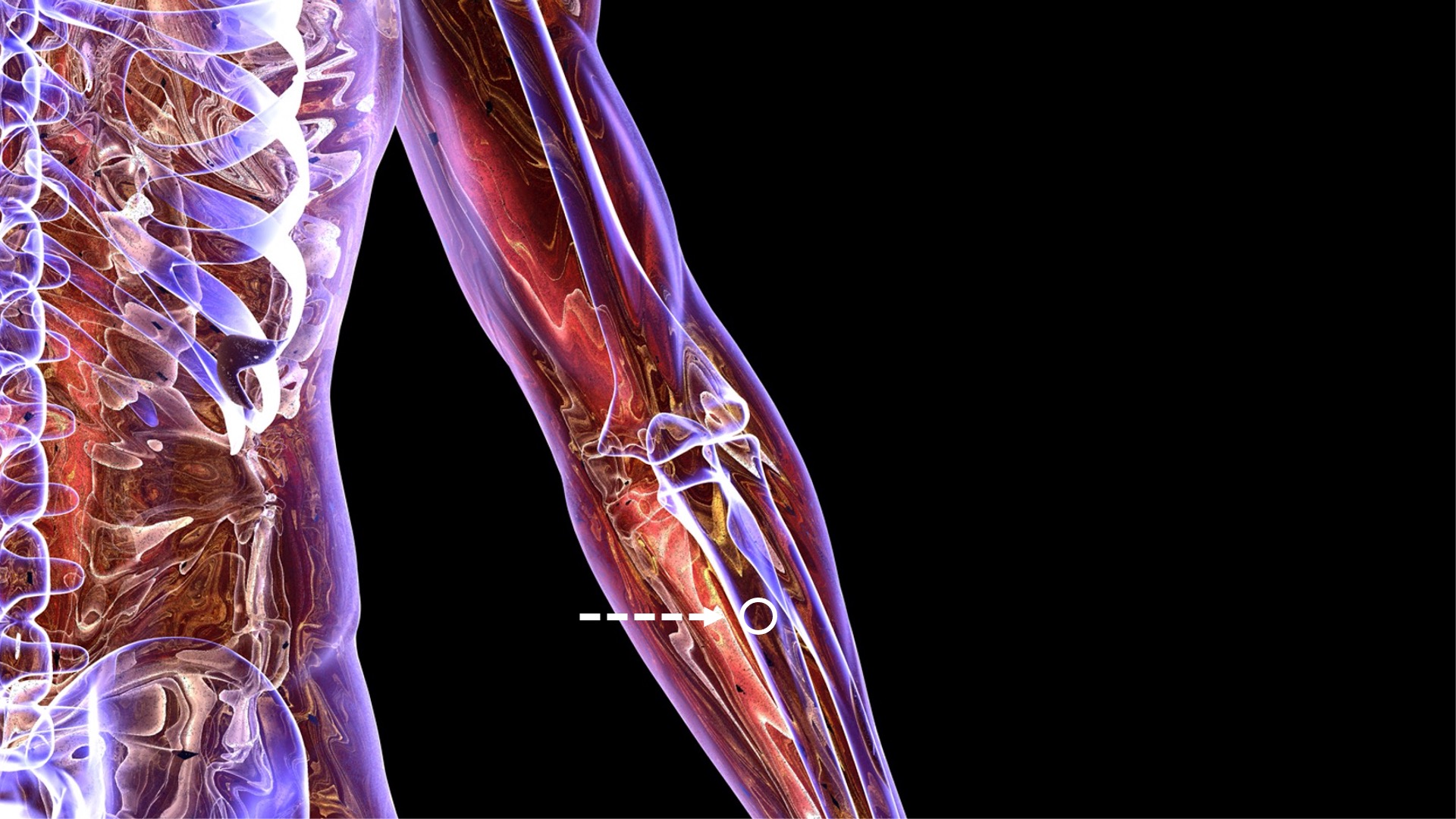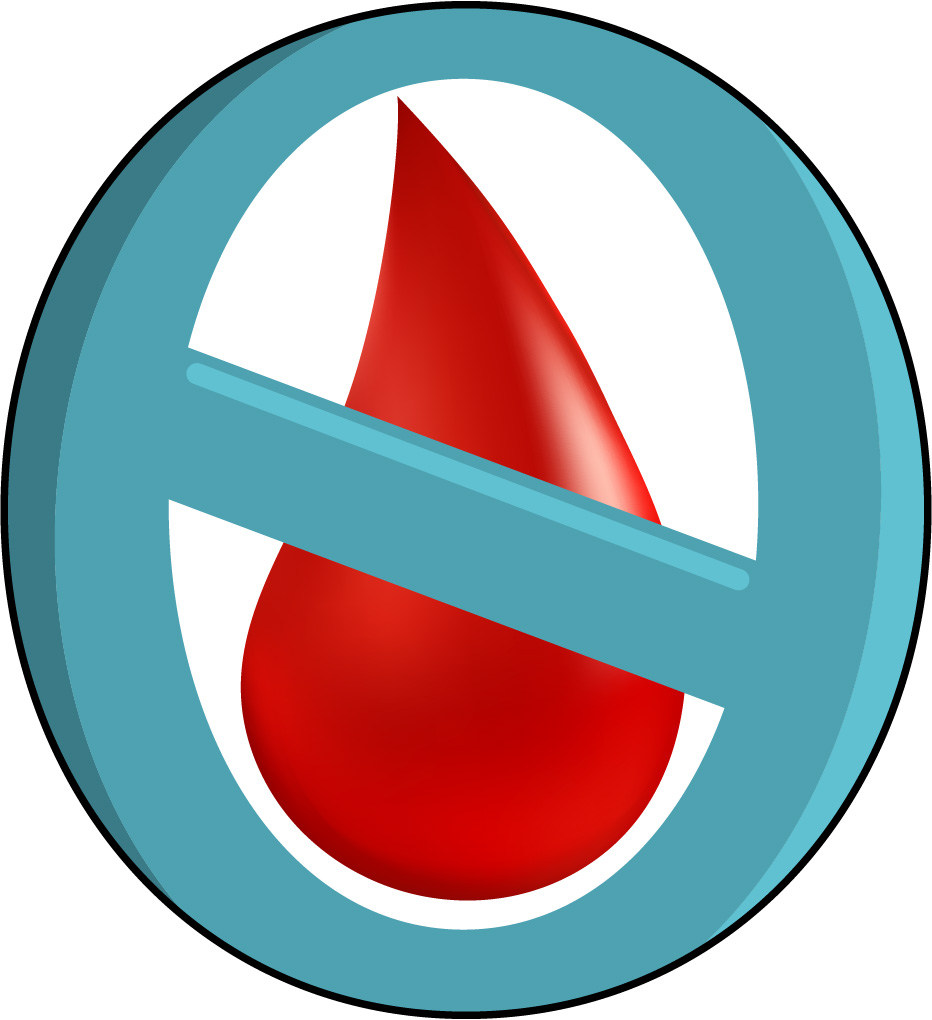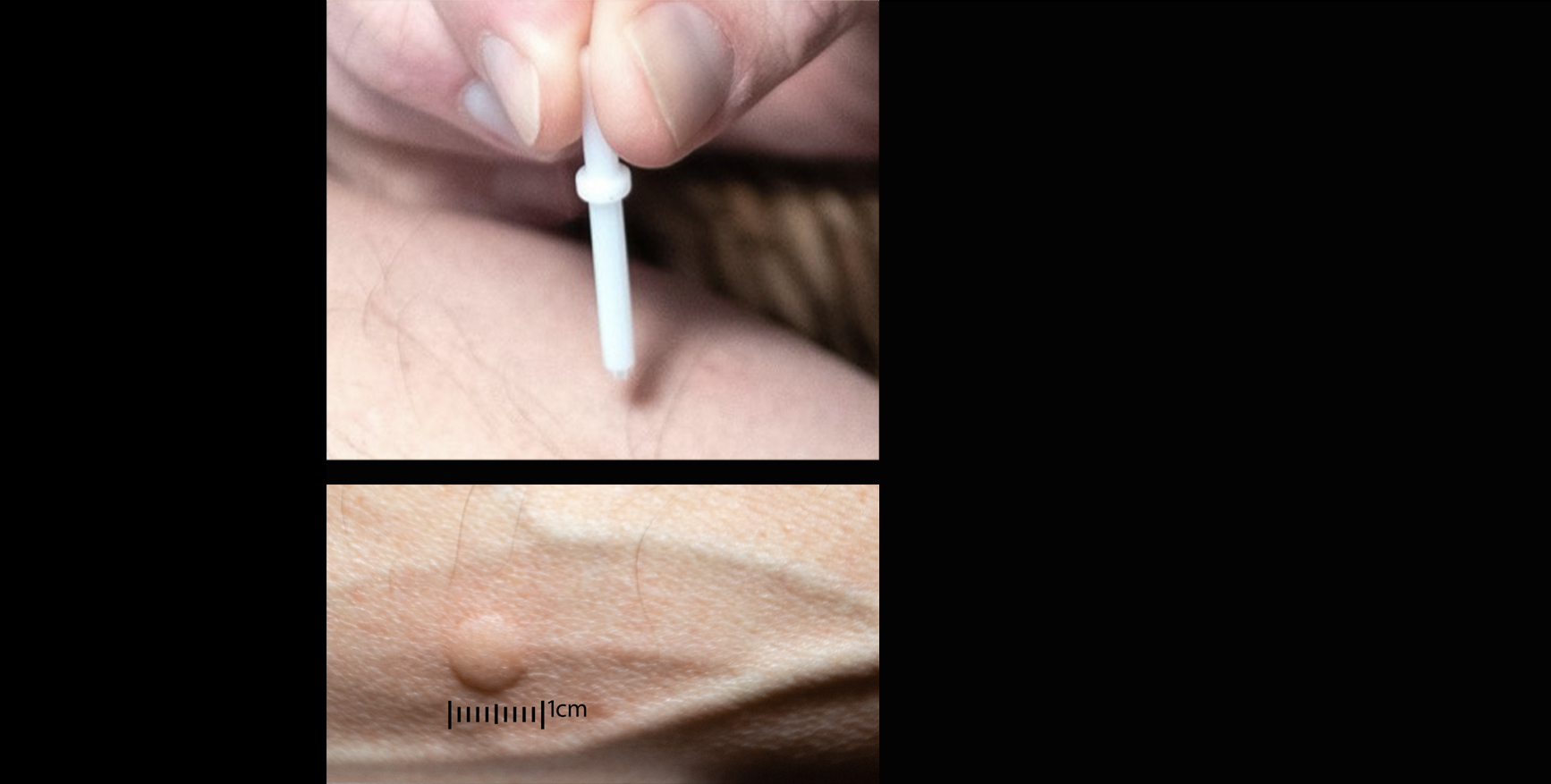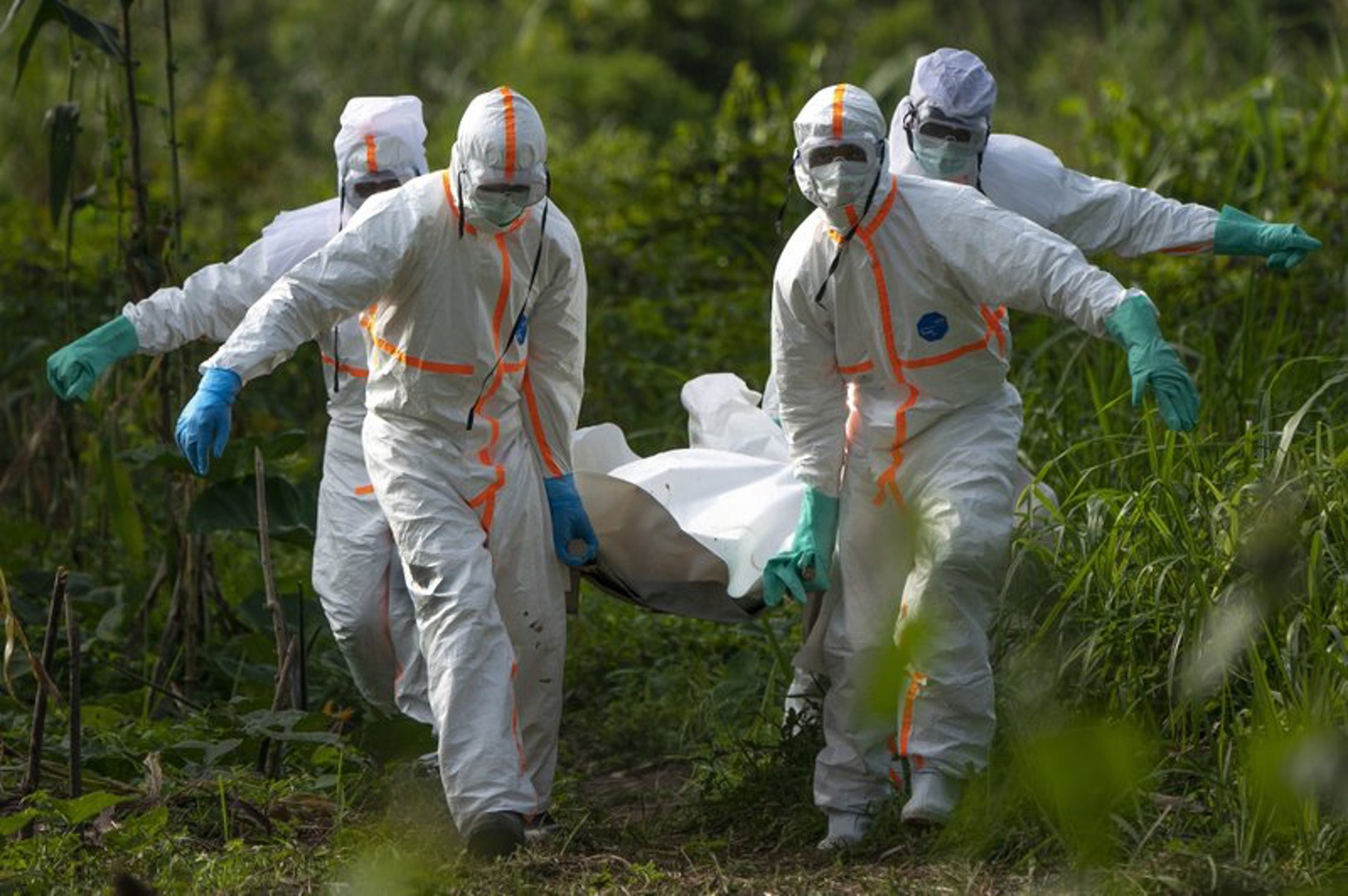





The first new approach to rapid
diagnostics since the home
pregnancy test appeared in
drugstores almost 50 years ago
diagnostics since the home
pregnancy test appeared in
drugstores almost 50 years ago
No Blood Needed
Bloodless Dx Technology
- Bloodless Dx technology utilizes the whole body to detect and monitor for disease
- The test acts as a tiny analyzer accessing unlimited sample flow-through
- The human immune system is adapted to function as a real-time diagnostic indicator
- Requires only 1-step to generate results
- Eliminates sample collection (including blood, urine or any other bodily fluid)
- Generates results within 60 secs
- Is an order of magnitude less complex to manufacture and use than rapid tests
- Is painless to apply, invisible and remains active for weeks until triggered
- Can be applied prior to infection and biodegrades on the expiration date
- Is not limited to a static, fixed volume of sample
- Performance is not affected by environmental conditions
- Exploits interstitial fluid, an underutilized, information-rich biofluid
- Provides a new way of managing diseases, disease outbreaks and pandemics
- Is simple and economical enough for anyone in the world to obtain and use
- Tests consists of assay reagents coated onto the tip of the test applicator – Only two components
- Tests are applied in one step - No blood is drawn
- Tests remain active for weeks – Eliminates repeat testing
- HIV
- P24 Early Infant Diagnosis
- Hepatitis
- SARS-CoV-2
- Ebola
- Tb-Lam
- Troponin
- Procalcitonin
- CRP
- Feline leukemia virus
- Canine heartworm
- Sepsis early warning test
- Interferon-gamma release assay (IGRA) self-test
- T-cell subset identification
- Parasites
- Biowarfare agents
- Novel biomarkers
- Research
